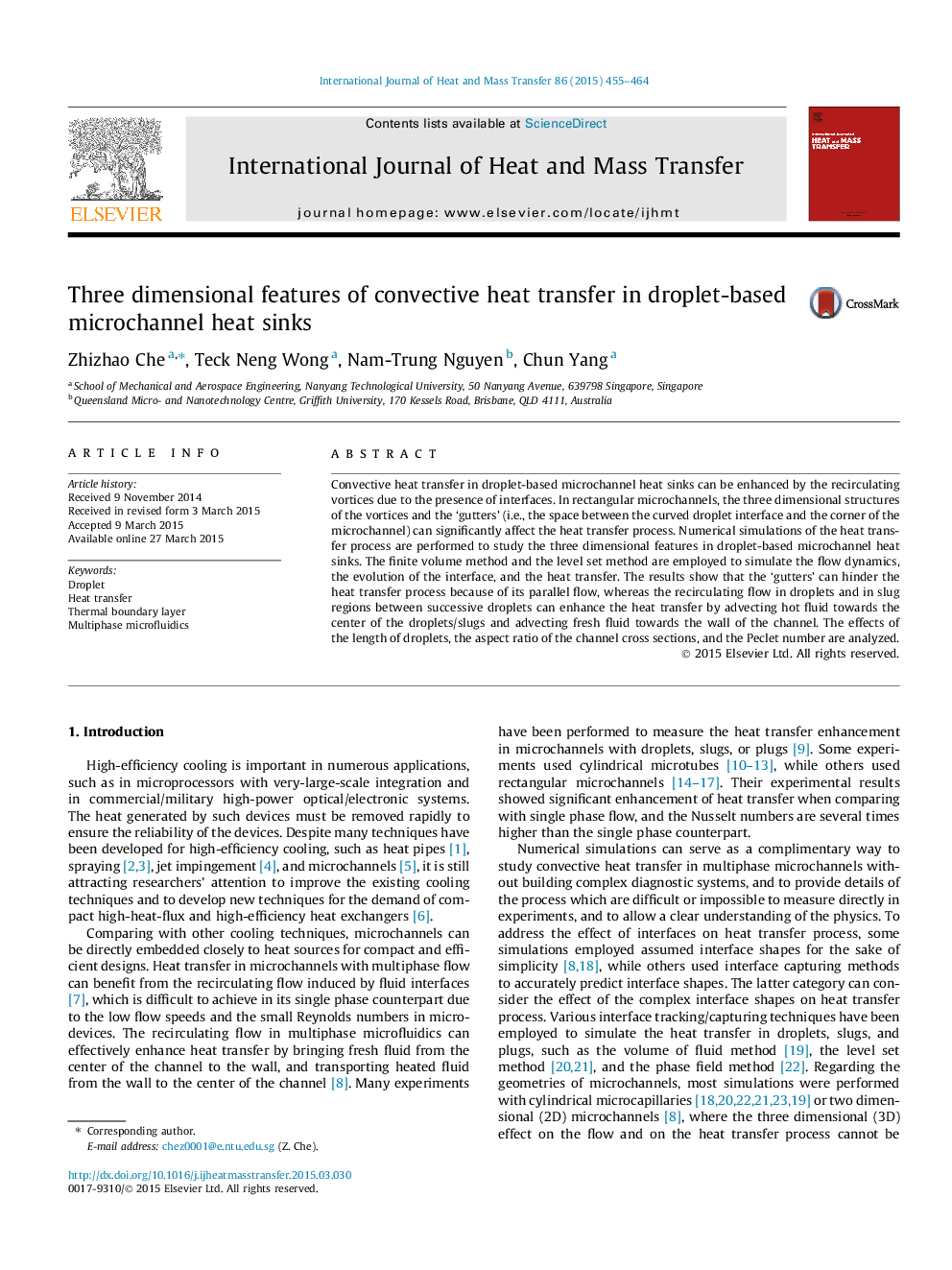| Article ID | Journal | Published Year | Pages | File Type |
|---|---|---|---|---|
| 656754 | International Journal of Heat and Mass Transfer | 2015 | 10 Pages |
Convective heat transfer in droplet-based microchannel heat sinks can be enhanced by the recirculating vortices due to the presence of interfaces. In rectangular microchannels, the three dimensional structures of the vortices and the ‘gutters’ (i.e., the space between the curved droplet interface and the corner of the microchannel) can significantly affect the heat transfer process. Numerical simulations of the heat transfer process are performed to study the three dimensional features in droplet-based microchannel heat sinks. The finite volume method and the level set method are employed to simulate the flow dynamics, the evolution of the interface, and the heat transfer. The results show that the ‘gutters’ can hinder the heat transfer process because of its parallel flow, whereas the recirculating flow in droplets and in slug regions between successive droplets can enhance the heat transfer by advecting hot fluid towards the center of the droplets/slugs and advecting fresh fluid towards the wall of the channel. The effects of the length of droplets, the aspect ratio of the channel cross sections, and the Peclet number are analyzed.
